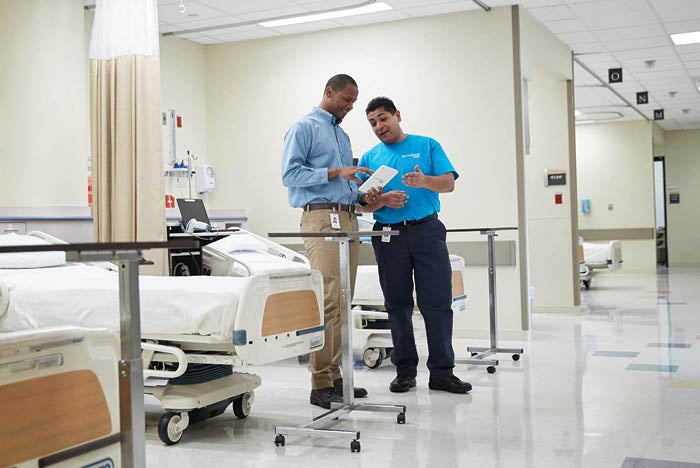Maintaining cleanliness across multiple facilities
It’s a typical day in the local outpatient clinic. A hundred patients will come through the door today, many with a companion. They will first sit in the small waiting room, then be ushered to one of the exam rooms in the facility. On average, about 30 will come through each exam room.
Each visitor will touch the door handles, the exam table, chairs, countertops and magazines, and they may visit the facility’s public restrooms. They will expel respiratory droplets from their noses and mouths into the air. If they are carrying infection, it will possibly be transmitted to others nearby or onto the surfaces within the clinic.
Meanwhile, in the local acute care facility, one patient will be in a room and perhaps have one or two friends or family visit during the day. Numerous hospital staff will come by, and the room will be regularly tended by a trained environmental services (EVS) technician who will clean and disinfect surfaces, focus on high-touch items and floors, and take out the trash and soiled linen.
The challenge for EVS professionals is clear: maintain the same level of cleanliness and safety in two vastly different environments.
In a typical outpatient facility, terminal or detail cleaning and disinfection are not practical after every patient visit but, due to the elevated chance of infection because of higher traffic, it is essential that high-touch areas, public spaces and restrooms throughout the facility are routinely cleaned, and exam rooms cleaned and disinfected after every patient.
The pace of disinfection in outpatient environments is almost constant. Communication, efficient practices, training and time management are essential.
Projections indicate that the number of outpatient care facilities of all segments will continue to grow. They are the future, so EVS professionals must learn to operationalize their cleaning for best efficiency and best patient outcomes.



